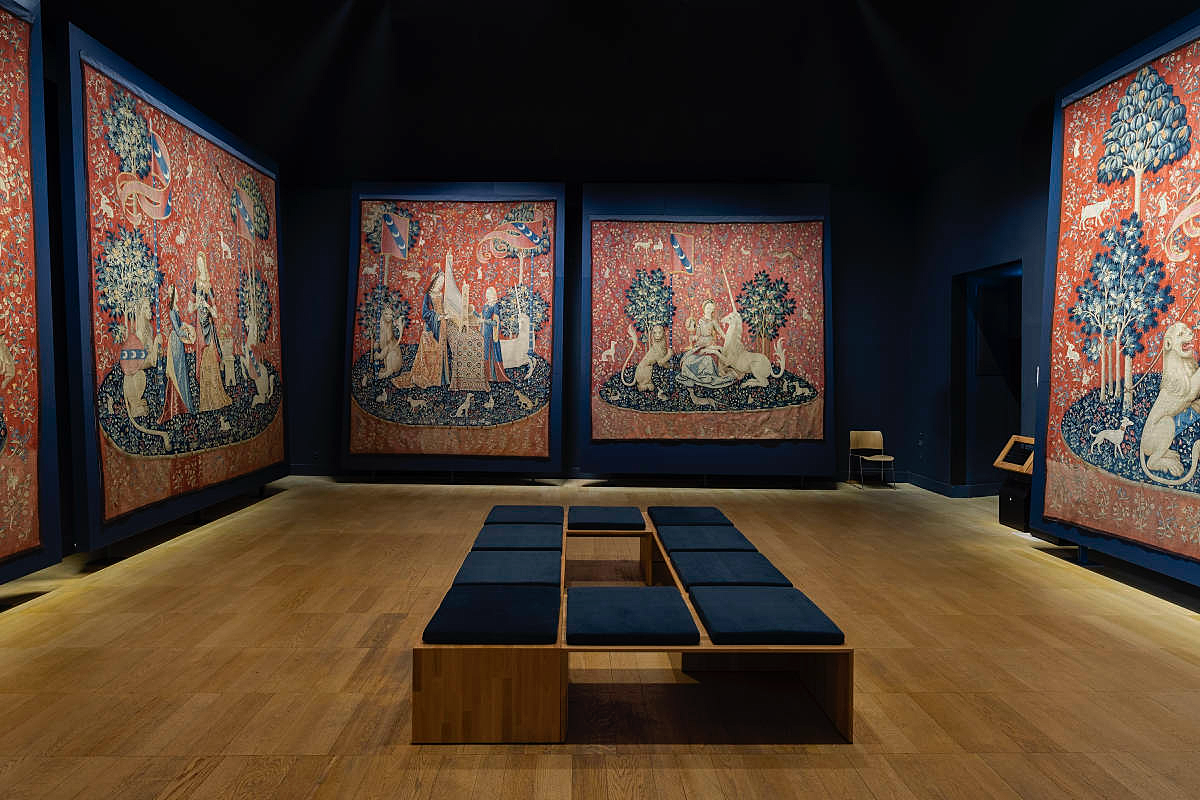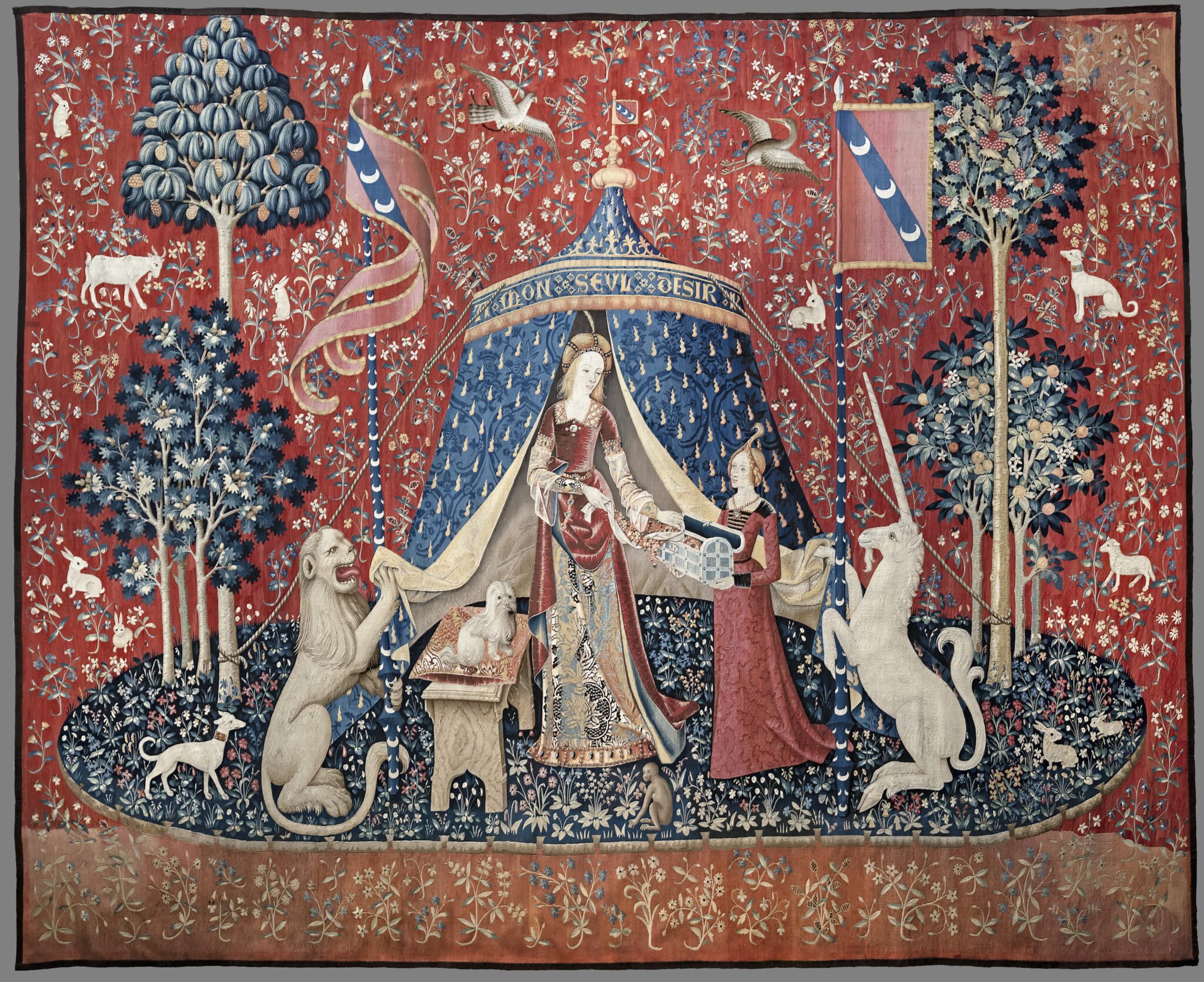
In this 15th-century ensemble commissioned by the Le Viste family of Lyon, each tapestry represents one of the five senses: smell, sight, hearing, touch and taste.

La Dame à la licorne (The Lady and the Unicorn)
tapestry
377 x 473 cm.
Painted between 1484 and 1500
Each sense is portrayed through the recurrence of a lady, magnificently dressed and adorned with jewels, and a unicorn, set against a thousand-flower backdrop of trees and animals.
The unicorn was an ambivalent animal in the Middle Ages: a symbol of purity, as it could only be approached by a young virgin, it was also a sexual symbol.
6 tapestries but only 5 senses... So what does the sixth tapestry (our illustration) represent: a sixth sense? Or is it the synthesis of all?
The tent features a motto that is itself enigmatic: "Mon seul désir" or "A mon seul désir", depending on whether you consider that the A belongs to the motto or precedes it, as an I seems to follow it. The motto "mon seul désir" would then be framed by the initials of Antoine Le Viste and his wife Jacqueline.
Is the tapestry a wedding gift that combines the symbols of courtly love, as in the allegories of the Roman de la Rose?
Does the tapestry represent the intellect? According to Plato, desire guides our senses in understanding the world, in order to reach the truth.
Or does the sixth tapestry depict the sixth medieval sense, the heart? In 1402, Jean de Gerson's Moralité du coeur et des cinq sens (Morality of the heart and the five senses) ranked the senses from the most material to the most spiritual, making the heart the noblest sense.
The secret of the sixth tapestry has yet to be revealed, and the Lady of the Unicorn will continue to make us dream...










